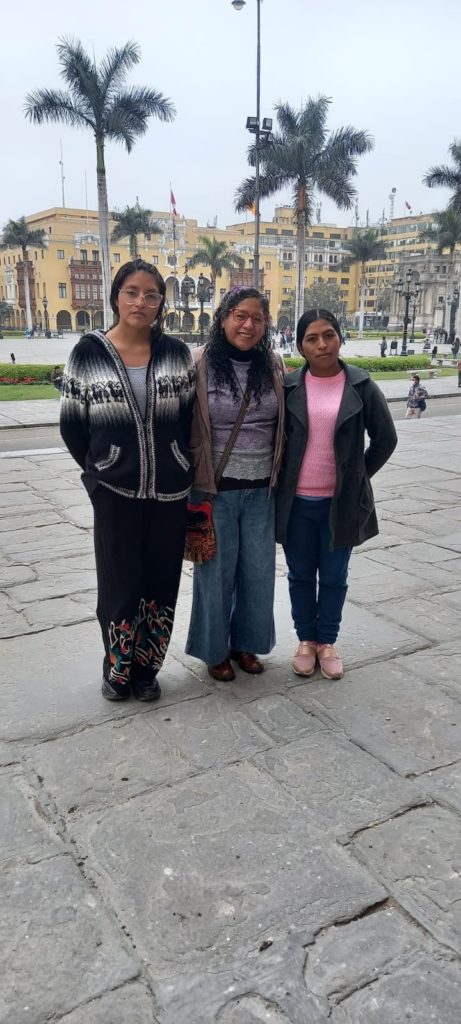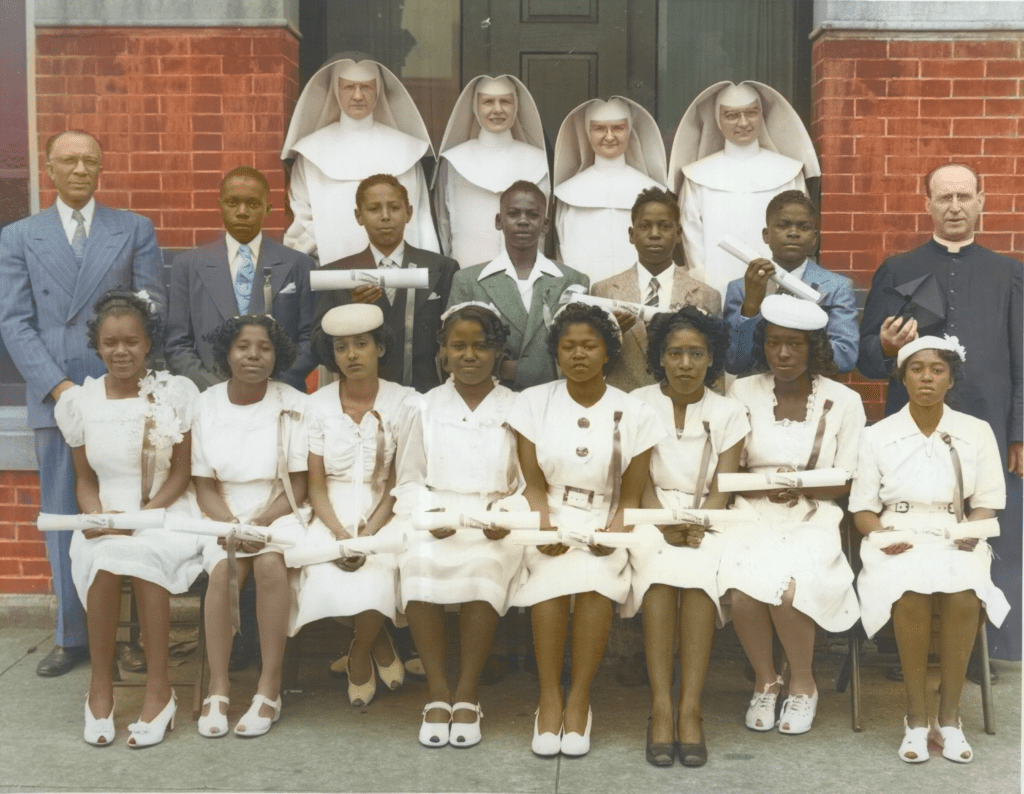By Sister Rose Miriam Schulte, OP
In our Prayer for the Life of the World, we daily ask that our hearts might be freed “to recognize and attend to Christ in hidden and unexpected places.”
Some of these hidden places are lodged in our congregational past. Not unlike any organic process, a congregation’s earlier plantings of heirloom seeds can burst forth in today’s fruits and tomorrow’s hopes. Such plantings appear serendipitous. Reflection lays bare the work of the Spirit. Many know us, Springfield Dominicans, as advocates of social justice within our more traditional ministries of education, healthcare, and pastoral works. In more recent years an articulated focus on dismantling systemic racism and valuing diversity of race, ethnicity, age, education, gender, religion, etc., guides ministerial decisions. Reflect with me on two corporate decisions of past decades which are taproots for our current Dominican life and mission.
Teaching in East St. Louis
The first of these occurred in 1937 when the devoted Sisters of the Congregation of the Blessed Sacrament, founded by St. Katherine Drexel in service to children of color, determined it necessary to leave St. Augustine School in East St. Louis, Ill. Our congregation had served nearby St. Mary Parish School since 1893, and were asked by the St. Augustine pastor, Father Harrington, to take on St. Augustine School as well.
St. Mary’s was the first Catholic elementary school in East St. Louis of the then-diocese of Alton. Our first sisters were welcomed by an industrial community of white immigrants who boasted a new brick church, school, and convent. In stark contrast, our first sisters at St. Augustine noted glaring differences in the facilities and available resources. St. Augustine School was a former tavern. Educational materials and school supplies were outdated and in short supply. We cannot know the depths of the communal discernment nor personal transformative graces which accompanied our sisters to St. Augustine. That seeds of blessing and discernment were present is clear from the pastor’s report to the diocese on Dec. 31, 1940.

Father Harrington wrote: “The Dominican Sisters of Springfield began in September their fourth year in charge of our school.... I had certain misgivings regarding their adaptability and their attitude towards colored work; it was a new departure and new venture for the Community whose Sisters had never before taught in a colored school. I realized that a certain amount of risk was involved. I am particularly pleased to record that the results have been splendid. The Community has generously given us of their very best. The Sisters are most devoted to the children, in fact they consider it a special honor to be appointed to St. Augustine’s....” The sisters continued to recognize and embrace the needs and potential of their Black students. When St. Mary’s closed in 1949 due to the lack of white students in the changing neighborhood, Father Harrington and the Dominican Sisters opened St. Mary High School for African American students in the building. When in 1953 the diocese saw fit to close the high school in an effort to be non-participative in segregation, St. Mary’s returned to serving the elementary school children, now primarily children of color, until 1964. At that time the parish property was sold to the state and razed for the construction of a bridge and Interstate 70.
The tender seedlings of antiracism carried in the hearts of our sisters from East St. Louis germinated ever so slowly and flower in on-going efforts of dismantling systemic racism as we strive to become an antiracist religious congregation. Our partners of color in the various faith coalitions including our own Springfield Dominican Anti-Racism Team (SDART) continue to call us to accountability as they support, encourage, and collaborate in the effort.
Mission to South America
The second movement upon which I would like to reflect is the creation of a formation program in Peru. In 1961, Pope John XXIII called for religious congregations to send members to South America. In 1965 we sent four sisters to Peru. Twelve other North American Dominicans served in various Peruvian ministries in the years to follow. What began as relationships of service became, over time, relationships of collaboration, mutuality, and friendship. So it was that our sisters began to dream of walking with young Peruvian women struggling to make sense of their contemporary experience. By the 1980s a longing to have the Dominican way of life take root and flourish prompted serious prayer, study, dialog, and discernment across two continents. Our general chapter of 1983 confirmed the creation of a Dominican house of formation and supported our participation in the Peruvian Common Novitiate in Lima. March 6, 1987, found us welcoming the first four Peruvian candidates into the program.

Great rejoicing occurred when on March 18, 1990, these four young women professed their vows as Springfield Dominicans. In the intervening years, 14 other Peruvian women discerned their individual life-calling within the program. Some discerned a call to Dominican consecrated life and made profession. Currently seven vowed Peruvian sisters are Dominican Sisters and two young women are in initial formation in Peru. One of our Peruvian sisters now serves on the general council of the congregation. There are no longer any North American Springfield Dominican Sisters in Peru. Modern technology supports the travel and communication which now continues the sisterhood. The seeds planted by Dominican women of North and South America in the rocky ground of the Andes, the fertile valley of Huancayo, the bustling city of Lima, and the barren desert of Canto Grande continue to sprout. Shared in common life and mission, those same seeds have been nurtured in South Dakota, Illinois, Missouri, and Mississippi.
Transparency and vulnerability have allowed for women of two distinct cultures to embrace the ongoing challenge of proclaiming shared values with diverse cultural expressions. The learnings have influenced us as preachers of the Word. What was first perceived as a matter of blending cultures has become rather a deep appreciation of diversity—less an exercise of conforming than a sacred journey toward unity and mutuality.
About the photo: Sister Maria Luisa Naupari Gutiérrez, center, with two women beginning their journey toward profession in the Order of Preachers. Both are from Jarpa. Nicohol Samaniego Molina, left, is from Chacapampa and Maribel Ines Uribe Baquerizo, right, is from Anexo Misquipata-Barrio Centro Unión.
Sister Rose Miriam is the vicaress general of the Dominican Sisters of Springfield.



AMEN,TO ALL THOSE WHO FOLLOW GODS ⚘FOOTPRINTS⚘and God bless you all.im hoping God shows me the way.I think he already has.🙏😎✌